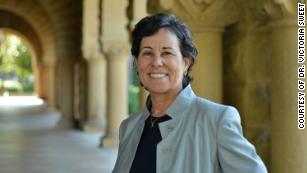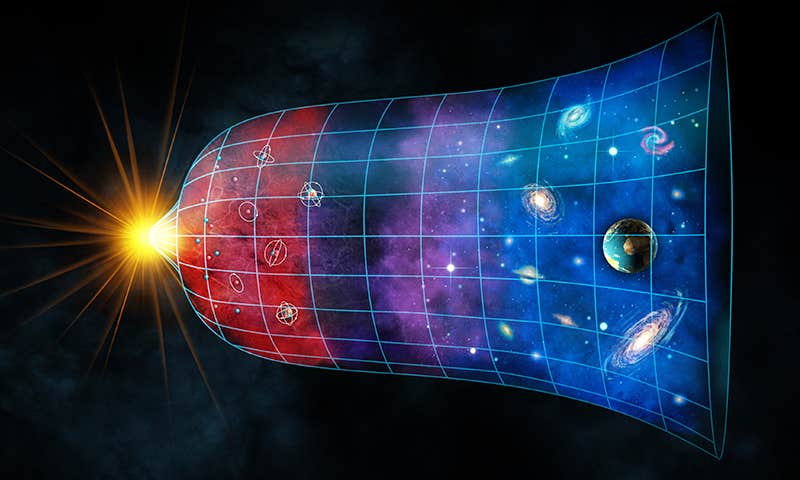Does spirituality belong at the doctor's office?
(CNN)Life's big questions drew Dr. Victoria Sweet to a career in medicine. "Your job is to deal with birth, suffering and death. It just captivated my imagination," said Sweet, now a bestselling author and associate clinical professor of medicine at the University of California, San Francisco.
"Medicine attracted me because I felt it was about the realest thing you could do," she said. As a physician, Sweet cared for people through the most difficult -- or most joyous -- moments of their lives.
Across her career in medicine though, Sweet said she watched the field eroded by a growing emphasis on efficiency and profit.

Dr. Victoria Sweet says creating space for a real, person-to-person connection is essential in medicine.
Physicians now spend more than half their time on tasks that aren't face-to-face with patients, a 2017 study found. Even during in-person consultations, a 2020 study said, a large proportion of physician time is devoted to using electronic health records.
Sweet saw a shift from more holistic medicine rooted in caring to an industry treating health care as a commodity. "It's a commodification that, I think, completely leaves out the essentials," she said.
What's essential, Sweet said, is creating space for a real, person-to-person connection in medicine. "The essence of what goes on between doctor and patient is very profound," she said. "That space, to me, seems sacred."
At the 10th annual Conference on Religion and Medicine
http://www.medicineandreligion.com/ this month, Sweet will give a plenary talk titled "Space for the Sacred in the Care of the Sick." The conference highlights scholarship focused on the intersection of health care and religion, including some organizations that argue we must make room for both the sacred -- and for spirituality -- in the doctor's office.
When medical care was spiritual care
"Modern medicine is secular," said Gary Ferngren, a professor emeritus of history at Oregon State University who studies the history of medicine and religion. "Since the late 19th century, it has developed very rapidly in cutting itself off from any religious or spiritual values."
For much of human history, societies used religious frameworks to understand the meaning of disease and pain, Ferngren has written. Illness could be attributed to causes such as a magical curse or divine punishment.
A more up-to-date understanding of disease gradually replaced those views. Today's doctors are -- thankfully -- unlikely to prescribe an exorcism or suggest patients make sacrifices to Asclepius, the Greco-Roman god of medicine.
Five stages of grief, and how to get through them
Five stages of grief, and how to get through them
But Ferngren has written that the historic presence of religion in the sick room also offered patients tools for grappling with questions still relevant in the 21st century. At a time when health care and religion were more closely aligned, a patient might receive not only medication when consulting a doctor but also religious consolation, comfort and meaning.
"What happens at death's door?" Ferngren said. "To a person lying in bed and wondering what kind of future there is, it's tremendously important."
Inviting spiritual care into the consultation room
In fact, many patients would like to discuss spiritual matters with their health care providers: One study found that 83% of patients want physicians to ask about their spiritual beliefs, especially when they're facing life-threatening illness, serious medical conditions and bereavement.
"A high percentage of people, if they're in the hospital for a physical illness, would like to talk to their physician about spiritual matters and have a conversation," said Dr. John Graham, president and CEO of the Institute for Spirituality and Health at the Texas Medical Center, a cosponsor of this month's conference.
Graham has defined spirituality as "our innate ability to connect -- to connect to others, to our environment, to the transcendent mystery and to our true, deepest self." Like Sweet, he said modern medicine's focus on efficiency leaves out that broader view of patients' well-being and their spiritual and religious needs during illness.
Addressing such needs is known as spiritual care, which Graham said most physicians don't have adequate training to do.
When working with medical students today, Graham shares lists of questions that might open the door to a deeper conversation with patients. "They could ask: 'In the past, when you go through a difficult problem, where have you found the strength to get through?' " Graham said.
For some patients, the answer is religion. Some patients are glad to share their own faith practices, Graham said. Or they might mention a connection to nature. Others talk about meditation or a trusted family member they've looked to for guidance.
Each patient brings different beliefs to the conversation. And advocates believe that all individuals -- including atheists -- can benefit from access to spiritual care.
Even an atheist can face 'spiritual distress'
"Atheists, religious, humanists -- everyone has that spirituality or inner life, the need for a sense of meaning and purpose," said Christina Puchalski, a physician and the founder of the George Washington Institute for Spirituality and Health. "If they're feeling a lack of that, it could be a source of spiritual distress."
Spiritual distress has been shown to be especially high in patients coping with serious and chronic illness, Puchalski said, and addressing it is critical in the case of palliative care.
"People who have high spiritual distress -- that's often linked to higher depression and anxiety," she said. "People who have high spiritual well-being also tend to have better health overall."
Spiritual interventions for cancer patients -- who are especially vulnerable to spiritual distress -- are associated with lower depression, anxiety and hopelessness, according to one 2018 meta-analysis. Another study of older adults found that spiritual well-being is linked to health-related quality of life, a measure of physical and mental health over time.
What does spiritual care look like in practice? It starts with the kinds of questions Graham discusses with medical students. Along with several colleagues, Puchalski developed the FICA Spiritual History Tool to help practitioners better understand their patients' spiritual beliefs. It contains questions that invite patients to ask for the kind of care they want, such as "How would you like me, as your health care provider, to address spiritual issues in your health care?"
When it comes to measuring impacts, however, Puchalski said clinical research into spiritual care is an area with lots of room for growth.
"It's a relatively new, up-and-coming field," she said. "When it comes to looking at spiritual distress as a clinical marker -- we are involved right now in trying to build that field of research."
Sign up for CNN's Stress, But Less newsletter. Our six-part guide will inform and inspire you to reduce stress while learning how to harness it.
Is the world facing a crisis of spiritual distress?
And for the last two years, Puchalski said, the Covid-19 pandemic has driven a surge of interest in the field of spiritual care. "All of a sudden people were dealing with really intense existential and spiritual distress," she said, pointing to the loneliness and grief the pandemic has brought.
Millions lost loved ones. Health care providers watched patients slip away in hospital intensive care unit settings without family members present. And people around the world grappled with questions about death and dying.
"People have dealt with those questions for centuries, right?" Puchalski said. "It's just that in the course of the pandemic, all of us have been affected whether we're facing serious illness or not."
Mindfulness matters: 5 ways to get started with mindfulness
Mindfulness matters: 5 ways to get started with mindfulness
While research into the fallout of Covid-19 is still young, one study in Croatia found that spiritual quality of life was linked to better mental health outcomes and emotional stability amid the pandemic.
For health care providers, taking time to look inward can make a difference, too, said Puchalski, who has introduced a professional development program called Reflection Rounds designed to help them do just that.
"Many of us have been called to serve others," she said, pointing to the wave of burnouts amid health care workers around the globe. "Serving people -- it impacts us."
But the effect of Covid-19 on spiritual well-being isn't just about distress and languishing. Puchalski said she also sees room for positive change as people around the world look for solutions to problems the pandemic brought to the fore. She said she hopes it will spur growth as the world looks ahead.
"I see people searching for meaning and purpose," Puchalski said. "And I'm seeing a sort of desire towards kindness, which is a beautiful thing."
Jen Rose Smith is a writer in Vermont. Read more of her work at
www.jenrosesmith.com
https://www.cnn.com/2022/03/13/health/s ... index.html






























